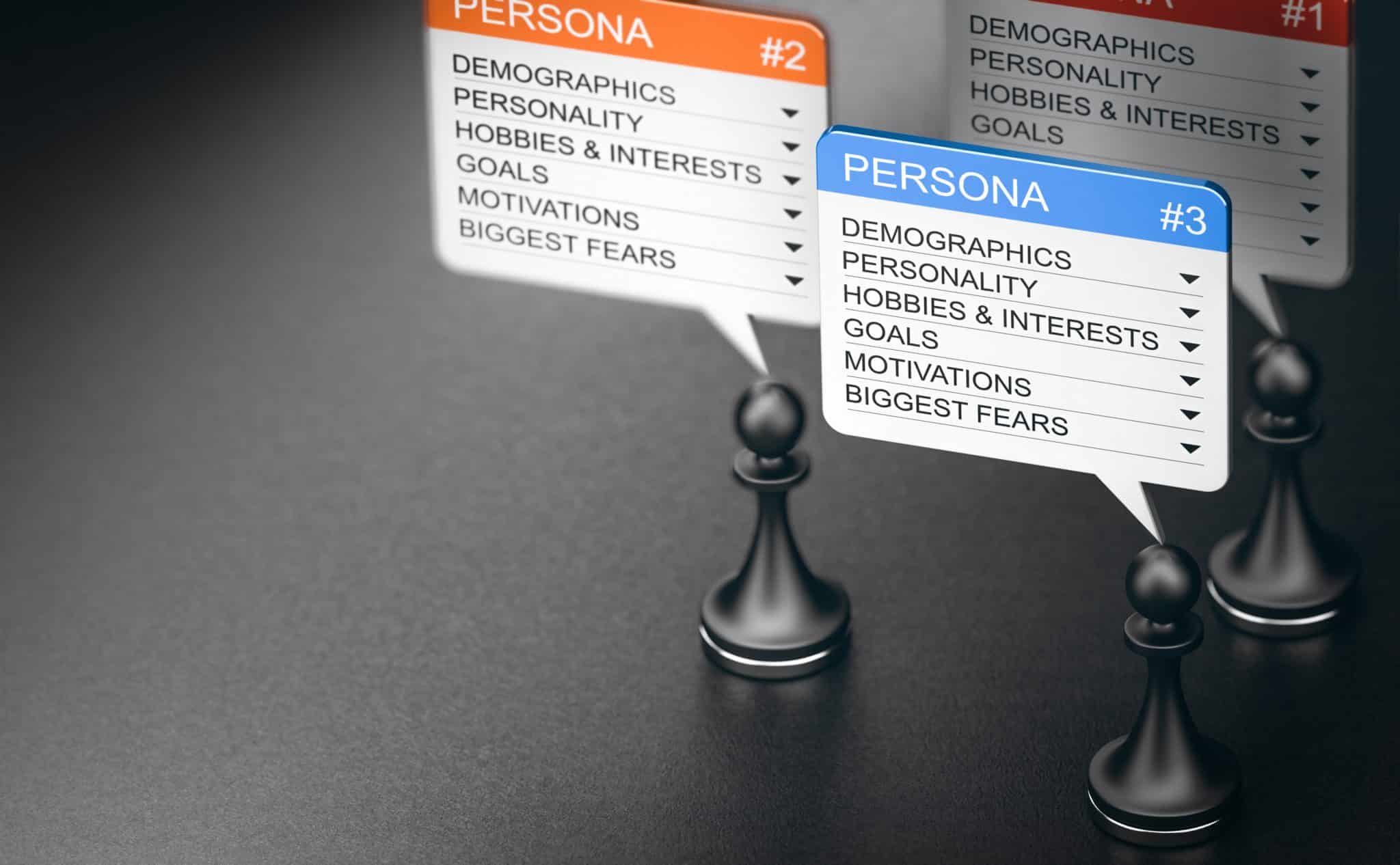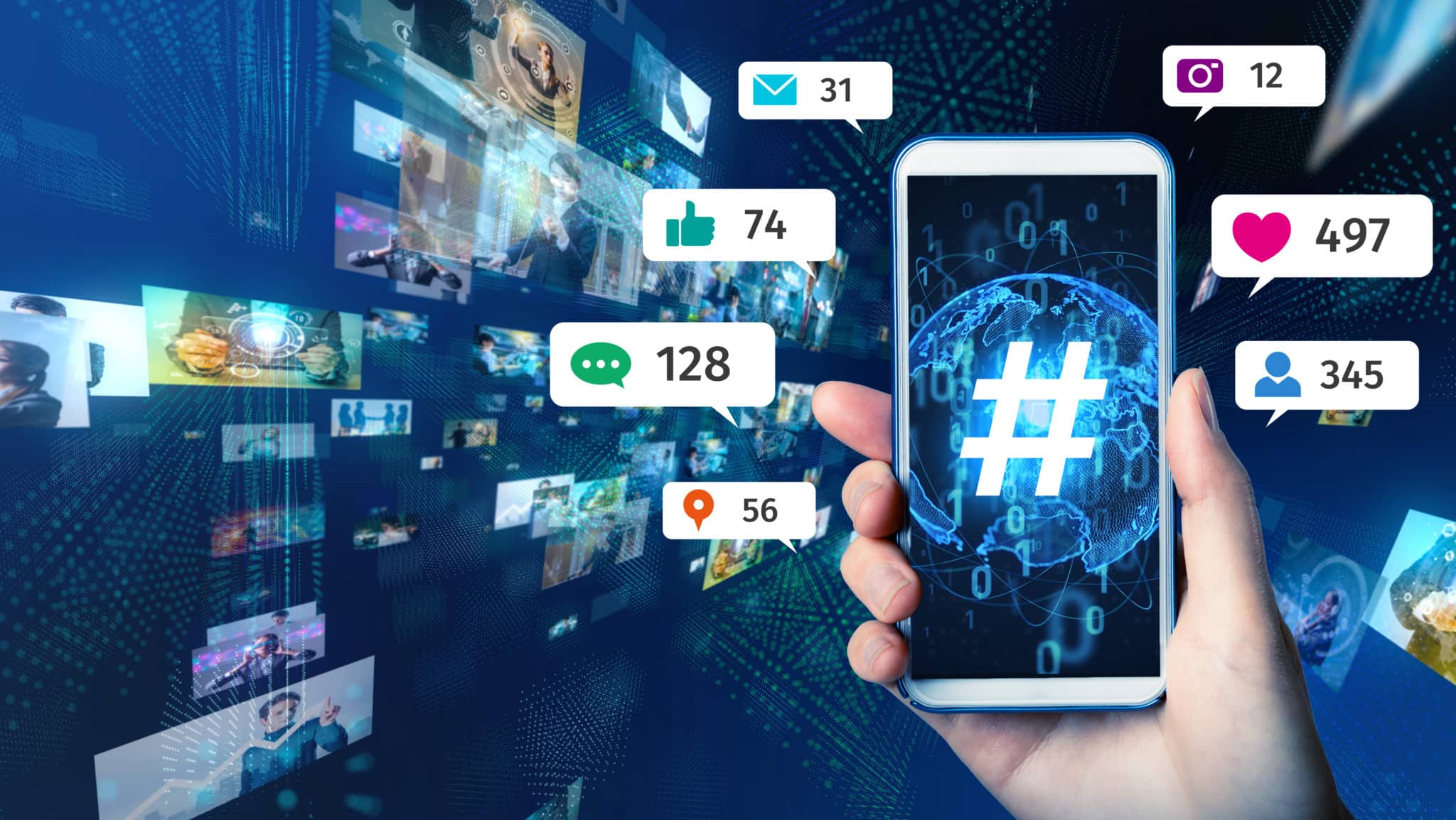Using LinkedIn marketing strategies, your business can provide a variety of benefits. You can attract new employees, build relationships, and grow your network. You can also monitor trends in real-time and identify quality leads.
The benefits of LinkedIn marketing are numerous, but how do you know which strategies are the best for your company?
I’ve used LinkedIn for over 10 years and have compiled a list of my top LinkedIn Marketing Strategies for 2023!
What is LinkedIn Marketing?
LinkedIn marketing is a powerful tool to help promote business for companies looking to reach potential customers and build relationships with their existing clients.
It offers an unprecedented level of targeting options, allowing companies to target the best audience for their product or service.
Marketers can easily fine-tune their campaigns by utilizing LinkedIn’s keyword targeting capabilities and advanced filters to ensure maximum return on investment (ROI). In addition, LinkedIn has a variety of content marketing opportunities, from sponsored updates to groups and influencer campaigns.
With its wealth of user data, companies can track precisely what content resonates with users and optimize their strategies accordingly.
Finally, businesses can use data-driven analysis to determine how their marketing messages perform across various platform channels. This will enable them to modify campaigns in real-time and maximize performance.
Why LinkedIn Marketing Works
Using LinkedIn for marketing is a great way to boost your business and improve brand awareness. Creating a well-optimized business page on a social networking site is essential.
You should also be active in groups and participate in industry discussions.
Ability To Engage With The Customers

While there are many reasons to use LinkedIn for marketing, one of the most important is the ability to engage with customers.
By posting engaging content, you can get your brand out there and close deals sooner. You can also promote your business-to-business interactions with ad content, such as sponsored content.
Retarget Your Contacts
In addition to the publishing platform, you can also leverage retargeting options for people who have visited your website.
Plus, saved audiences are available, too – so start using them!
Targeted Lead Generation
LinkedIn marketing is one effective way of lead generation for tech companies.
LinkedIn’s targeting capabilities enable businesses to find particular individuals or groups based on their:
- Job title
- Industry
- Location
This allows marketers to target highly relevant messages to their intended audience.
Networking with Influencers
LinkedIn is an excellent platform for connecting with powerful influencers in your industry who can help provide exposure for your business and its products/services.
Establish Thought Leadership
LinkedIn content marketing allows you to share valuable insight into industry trends, new technologies, and solutions – which can be used to establish yourself as a thought leader in your space.
Generate Brand Awareness & Visibility
Having a presence on LinkedIn can be a great way to do the following:
- Drive traffic to your website
- Increase brand awareness
- Build relationships with potential clients
There are several different best practices to follow when marketing on LinkedIn. These include incorporating visual material, building a social media audit, and establishing goals.
There are many ways to target your audience, and you can use paid advertising to ensure you reach the right people.
Step-by-Step Guide to Marketing On LinkedIn
Step 1: Tighten Up Your Company Profile Page
Your LinkedIn profile page should be treated as the face of your company and optimized accordingly.
Improving your LinkedIn company page will help boost engagement and build relationships with potential clients.
Include a brief but detailed description of what you do and high-quality visuals, such as logos and photos of your team or products.
Having a cover image for your business LinkedIn page is essential. If you’re looking to promote your company, you can use a professional photographer or design your own.
Aside from the photo itself, you must follow certain specs to ensure that your LinkedIn profile is ready for the big time.
You’ll also want to ensure that your page is up-to-date with all relevant information, including contact information and website links.
Step 2: Create LinkedIn Campaign Goals
The next step in your LinkedIn marketing strategy is to create campaign goals. You need to determine what you hope to achieve from your campaign, such as getting more website traffic, generating leads, boosting brand awareness, and driving sales.
To ensure your goals are achievable, they must be specific and measurable. For example, increasing website visits by 20% within four months is a much better goal than simply ‘increasing website visits.’
When setting goals, it’s essential to consider the available resources to realistically assess targets that can be attained with the resources at hand.
Additionally, look at the key performance indicators (KPIs) associated with each goal and ensure they are clear and relevant to evaluate the success of the campaign.
A few examples of KPIs include cost per lead or conversion rate. As well as setting high-level goals for your campaign, it’s also essential to set engagement objectives, such as creating content and targeting influencers who will help spread your message further.
Step 3: Do Customer Research
Researching your target audience is essential to create an effective marketing strategy.
You can use LinkedIn’s search tool to find people who match specific criteria, such as:
- Job title
- Location
- Industry
Understanding the demographics of your target audience will help you craft content and messaging that speaks to their interests and needs.
It’s also important to use LinkedIn’s analytics tool to track engagement with your posts, so you can adjust your content strategy if needed.
Step 4: Research Your Competitors
Once you’ve researched your customers, it is a good idea to research your competitors. It is a crucial part of determining your competitive advantage and helps you understand the competitive landscape on a deeper level.
One way to research competitors is by monitoring their content and seeing what kind of presence they have on LinkedIn.
You can check for content such as the following:
- Posts
- Updates
- Profile information
This allows you to see what kind of messages they are sending out, who they are targeting, and how they differentiate themselves from other competitors.
Another way to research competitors is by looking at their engagement rate; this will help you determine how much engagement they are getting with their content and how many people are interacting with them online.
Additionally, you can look at who else has already engaged with your competitor’s posts; this will give you an idea of who their target audience is and which types of people engage positively with the brand.
Finally, conducting keyword research for your industry will allow you to discover what topics or keywords your competitors may be focusing on when it comes to their marketing efforts.
By understanding which words or phrases are most popular among customers in your industry, you can better tailor your content strategy around those terms and use them to gain visibility against your competition and establish yourself as an authority in the field.
Step 5: Create a Customer Persona

Creating a customer persona is an essential step in any successful LinkedIn marketing strategy.
This step helps marketers to identify the characteristics of their target customers, such as:
- Age
- Gender
- Occupation
- Location
A buyer persona helps marketers to understand who they are targeting and how to reach them. It also allows them to create more relevant content by understanding what interests and motivates their audience.
To create a customer persona, marketers should first research their target customer base and determine who would be interested in their product or service.
Then they should research the demographics of those customers by looking at data from LinkedIn profiles or using third-party platforms.
They should also look at customer reviews online to find out what they like and don’t like about different products or services and use this information to refine their buyer personas.
Finally, once all of the data has been collected and compiled, marketers can use it to create more tailored marketing campaigns and messaging by considering the preferences of each segment within their target customer base.
Step 6: Post Engaging Content for Your Personas
After identifying your target personas, you need to create content that resonates with them.
This type of content should be relevant to your target audience’s interests, needs, and challenges. When you create and share content that resonates with your personas, they are more likely to engage with it and follow up on your offer or call to action.
Furthermore, posting engaging content regularly not only helps you build relationships with your followers but also encourages them to come back for more.
There are several ways to ensure that the content you post is engaging. Firstly, it should be fresh and informative – sharing timely industry news or creating original content pieces can help boost engagement levels.
Secondly, it should include visuals whenever possible – this could consist of the following:
- Images
- Videos
- Infographics
Finally, use compelling language in titles or descriptions to draw attention and encourage people to click through. Additionally, using catchy phrases such as “you won’t believe what happened” will increase engagement levels by appealing to a person’s curiosity.
Step 7: Utilize LinkedIn Groups
There are several different aspects to LinkedIn marketing, but a common strategy involves using LinkedIn groups to share and discuss content.
A LinkedIn group can be a great way to promote your company, ask questions, and interact with other members in your industry.
It is essential to be consistent with your posts and content.
You may also want to include a call to action in your post. You can do this in the form of a link at the end of the post or in a LinkedIn ad.
Step 8: Use LinkedIn Paid Ads
The next step to marketing on LinkedIn is to use paid ads. Paid advertising on LinkedIn offers precise targeting capabilities, allowing you to reach a specific audience, as well as real-time analytics of your campaigns.
By leveraging LinkedIn’s sophisticated ad targeting and optimization tools, businesses can maximize LinkedIn ads by personalizing their messages to reach highly tailored audiences. This can help you increase brand awareness and engagement with potential customers.
Using the platform’s native ad units, including Text Ads, Sponsored InMail, or Dynamic Ads, you will be able to advertise your products and services within the LinkedIn newsfeed or in users’ individual inboxes.
You can also create video ads as part of your campaign. All paid ad campaigns are managed via the LinkedIn Campaign Manager interface, where you can set up and manage budgets, bids, target audiences, and more for both sponsored content and text ads.
To ensure your budget is well spent, it’s crucial that you create compelling content for each ad unit that resonates with the audience you are trying to reach. Always test different ads and measure the results against each other before scaling out a winner.
Step 9: Make All Employees Part of the Campaign
Developing employee engagement is one of the most essential factors for leaders. It directly affects the experience of employees throughout the different stages of the employee life cycle.
Getting employees to engage with your business LinkedIn page isn’t always easy. However, you can help increase engagement and reach a broader audience on the social networking site.
Some ways to include your employees in your LinkedIn campaigns include:
- Creating employee referral programs and encouraging them to share content on their personal LinkedIn profiles.
- Using LinkedIn’s “People You May Know” feature to showcase employee talent within your organization.
- Holding LinkedIn webinars or live talks with your employees.
- Developing LinkedIn groups related to the company, allowing people to interact with each other in a more informal manner.
- Encouraging employees to add LinkedIn endorsements and recommendations for colleagues or customers.
Step 10: Measure, Rinse and Repeat
This means measuring the success of specific campaigns and tactics, coming up with ideas and insights for improvement, and then repeating the process again.
One way to measure success is to track key performance indicators (KPIs) such as the following:
- Reach
- Engagement rate
- Leads generated
- Traffic to the website
- Impressions over time
- Clicks from links shared on LinkedIn posts
By tracking these KPIs on a regular basis, you can get a better sense of what types of content work best for your audience.
Additionally, it is important to pay attention to the metrics that show how users are interacting with your posts (such as likes or comments).
This will give you an understanding of what resonates with your target audience and which topics they find more engaging.
LinkedIn Posting Tips
You’ve got your LinkedIn strategy in place. Now it’s time to start posting!
To ensure you get the most out of each post and reach the right audience, here are a few tips:
- Add LinkedIn groups to your page
- Tag employees/people in your posts
- Engage with your community
- Use LinkedIn hashtags
Add LinkedIn Groups to Your Page
Adding LinkedIn groups to your page is an incredibly helpful way to network with professionals in different industries and find potential customers.
Joining these groups allows you to stay up-to-date on current topics, listen to conversations between other members, and get valuable advice from experienced professionals.
By participating in discussions, you can also make yourself known as an expert in your field.
Additionally, many groups offer job postings and relevant industry news that could benefit you and your business. Joining a few of the most popular groups related to your work is critical in ensuring that the right people see and interact with your content.
Tag Employees/People In Your Posts
Tagging employees or people in your LinkedIn posts is a great way to increase engagement and visibility. Tagging can be used to draw attention to colleagues, clients, partners, and other people who may be interested in your post.
When you tag someone, they will receive a notification, prompting them to look at your post. This encourages interaction and discussion with your post, which helps boost viewership and engagement from others.
Not only that, but tagging also encourages cross-promotion, as the tagged individual may share your post on their own page or with their followers.
Engage with Your Community
Engaging with your LinkedIn community is essential for building relationships and gaining trust.
One way to engage with users in LinkedIn groups is by responding to their comments and questions while providing helpful advice or tips on the topics they are discussing.
Another way is creating polls or surveys that will allow you to get valuable insights and feedback from the LinkedIn community.
By regularly engaging with your LinkedIn community, you will be seen as an expert in your field and establish yourself as a reliable source of information.
Use LinkedIn Hashtags

Using LinkedIn hashtags is a great way to increase the visibility of your LinkedIn posts. LinkedIn hashtags help make your post more discoverable and visible to users outside your immediate network.
When creating LinkedIn hashtags, it is essential to use relevant keywords that match what you are posting about.
Additionally, using LinkedIn-specific hashtags such as LinkedInLocal or LinkedJet will help you reach an even wider audience.
By using LinkedIn hashtags, you can ensure that your post reaches the right people and get more engagement from potential customers.
Wrap Up
By following LinkedIn’s best practices and tips, you can ensure that your LinkedIn marketing strategy effectively reaches the right people and drives meaningful results.
It is important to remember that LinkedIn is a powerful platform for building relationships with customers, partners, and industry experts – so make sure to use it to its full potential.
By implementing the LinkedIn marketing tips listed above, you will be well on your way to building a successful LinkedIn presence!
Do you have any questions? Let us know in the comments below!
Frequently Asked Questions
A: LinkedIn hashtags are keywords that help make your post more discoverable to users outside of your immediate network.
A: There are many ways to ensure your LinkedIn posts are visible to the right people. You can utilize LinkedIn hashtags, tag employees and other people in your posts, engage with your Linkedin community and post regularly.
A: Other Linkedin marketing strategies include optimizing your profile page to make it more searchable, creating LinkedIn Ads, and leveraging LinkedIn influencers. Additionally, you can create content such as blogs or videos to showcase your expertise in your field.
A: LinkedIn marketing best practices include utilizing LinkedIn hashtags, tagging people in your posts, engaging with your LinkedIn community, and posting regularly. Additionally, you should make sure to optimize your profile page and create LinkedIn Ads.

